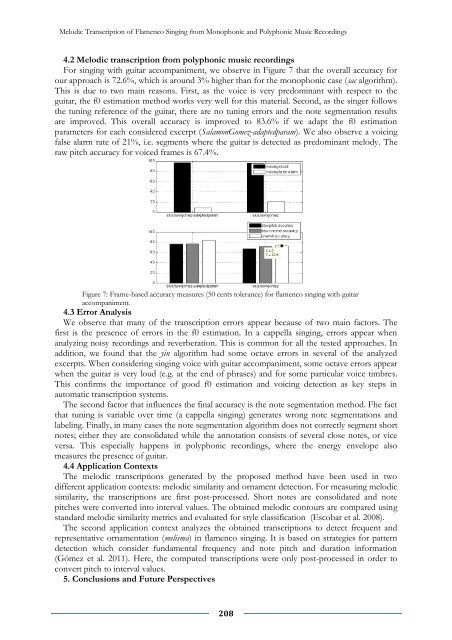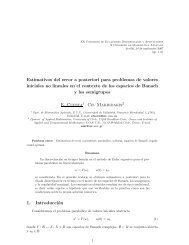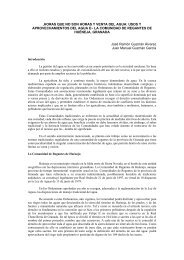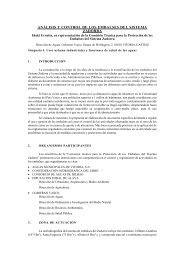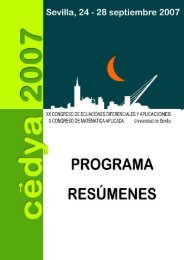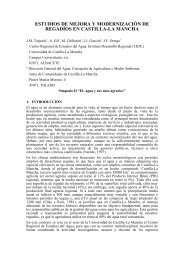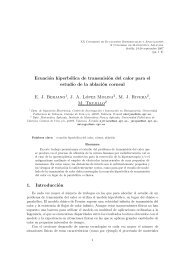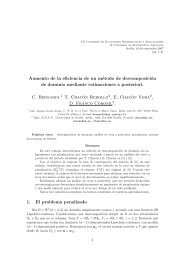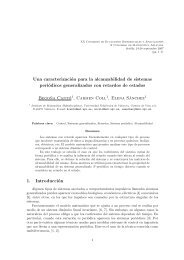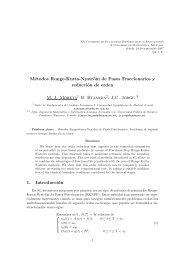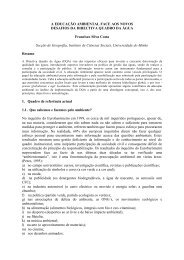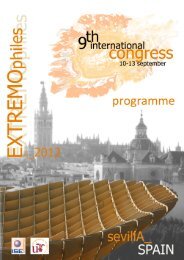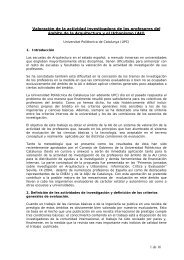LIBRO DE ACTAS (pdf) - Universidad de Sevilla
LIBRO DE ACTAS (pdf) - Universidad de Sevilla
LIBRO DE ACTAS (pdf) - Universidad de Sevilla
You also want an ePaper? Increase the reach of your titles
YUMPU automatically turns print PDFs into web optimized ePapers that Google loves.
Melodic Transcription of Flamenco Singing from Monophonic and Polyphonic Music Recordings<br />
4.2 Melodic transcription from polyphonic music recordings<br />
For singing with guitar accompaniment, we observe in Figure 7 that the overall accuracy for<br />
our approach is 72.6%, which is around 3% higher than for the monophonic case (sac algorithm).<br />
This is due to two main reasons. First, as the voice is very predominant with respect to the<br />
guitar, the f0 estimation method works very well for this material. Second, as the singer follows<br />
the tuning reference of the guitar, there are no tuning errors and the note segmentation results<br />
are improved. This overall accuracy is improved to 83.6% if we adapt the f0 estimation<br />
parameters for each consi<strong>de</strong>red excerpt (SalamonGomez-adaptedparam). We also observe a voicing<br />
false alarm rate of 21%, i.e. segments where the guitar is <strong>de</strong>tected as predominant melody. The<br />
raw pitch accuracy for voiced frames is 67.4%.<br />
Figure 7: Frame-based accuracy measures (50 cents tolerance) for flamenco singing with guitar<br />
accompaniment.<br />
4.3 Error Analysis<br />
We observe that many of the transcription errors appear because of two main factors. The<br />
first is the presence of errors in the f0 estimation. In a cappella singing, errors appear when<br />
analyzing noisy recordings and reverberation. This is common for all the tested approaches. In<br />
addition, we found that the yin algorithm had some octave errors in several of the analyzed<br />
excerpts. When consi<strong>de</strong>ring singing voice with guitar accompaniment, some octave errors appear<br />
when the guitar is very loud (e.g. at the end of phrases) and for some particular voice timbres.<br />
This confirms the importance of good f0 estimation and voicing <strong>de</strong>tection as key steps in<br />
automatic transcription systems.<br />
The second factor that influences the final accuracy is the note segmentation method. Fhe fact<br />
that tuning is variable over time (a cappella singing) generates wrong note segmentations and<br />
labeling. Finally, in many cases the note segmentation algorithm does not correctly segment short<br />
notes; either they are consolidated while the annotation consists of several close notes, or vice<br />
versa. This especially happens in polyphonic recordings, where the energy envelope also<br />
measures the presence of guitar.<br />
4.4 Application Contexts<br />
The melodic transcriptions generated by the proposed method have been used in two<br />
different application contexts: melodic similarity and ornament <strong>de</strong>tection. For measuring melodic<br />
similarity, the transcriptions are first post-processed. Short notes are consolidated and note<br />
pitches were converted into interval values. The obtained melodic contours are compared using<br />
standard melodic similarity metrics and evaluated for style classification (Escobar et al. 2008).<br />
The second application context analyzes the obtained transcriptions to <strong>de</strong>tect frequent and<br />
representative ornamentation (melisma) in flamenco singing. It is based on strategies for pattern<br />
<strong>de</strong>tection which consi<strong>de</strong>r fundamental frequency and note pitch and duration information<br />
(Gómez et al. 2011). Here, the computed transcriptions were only post-processed in or<strong>de</strong>r to<br />
convert pitch to interval values.<br />
5. Conclusions and Future Perspectives<br />
208


